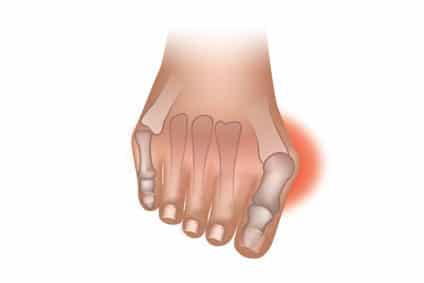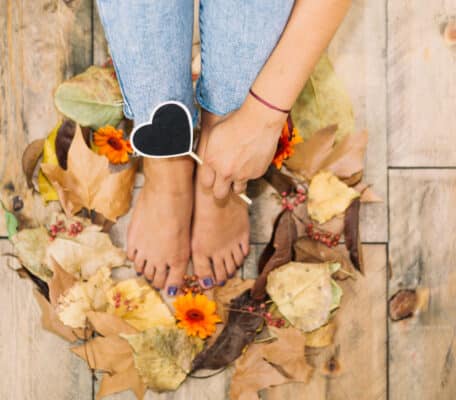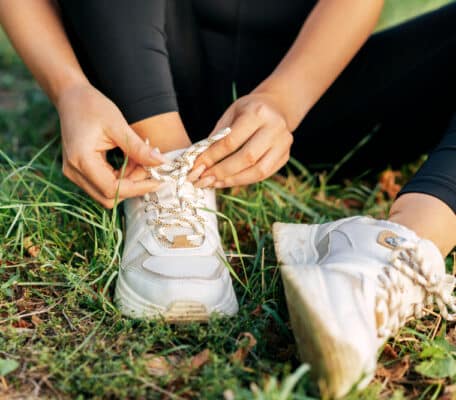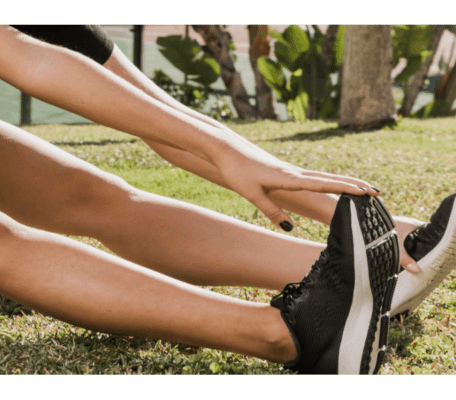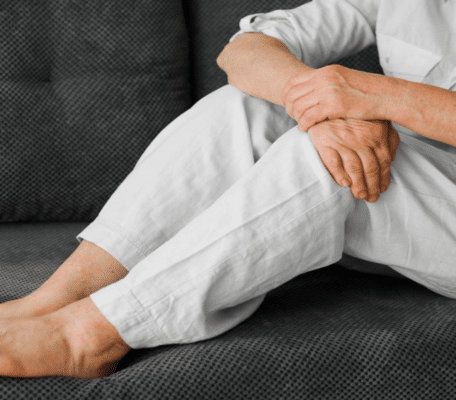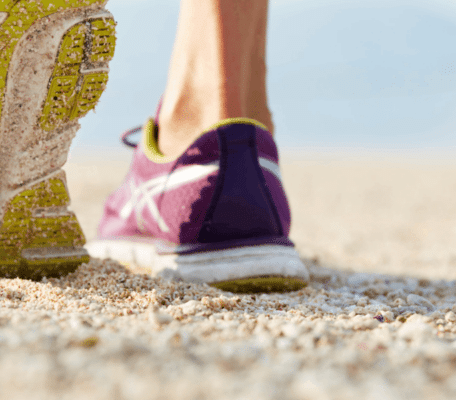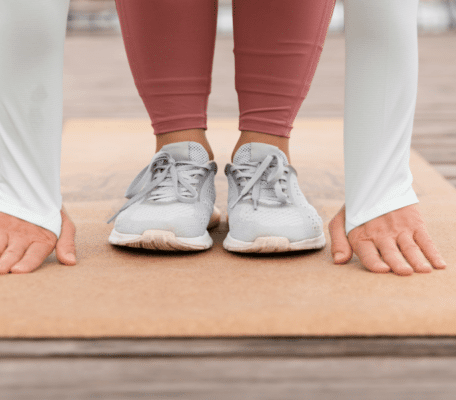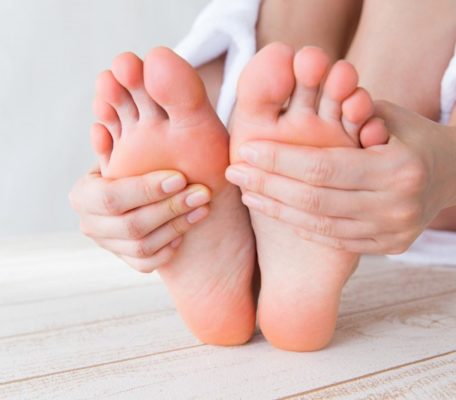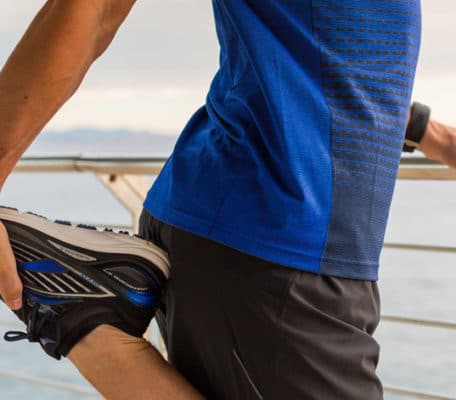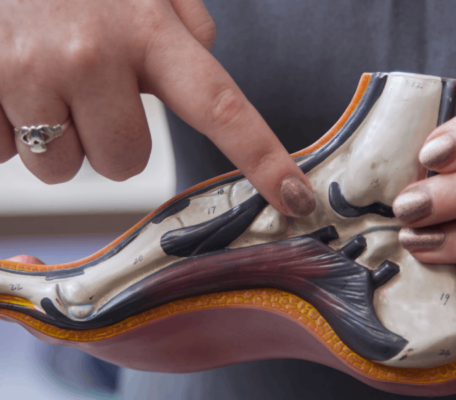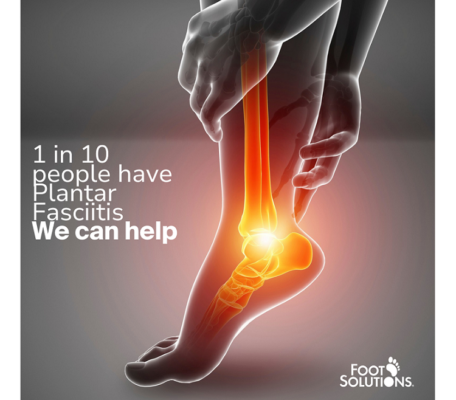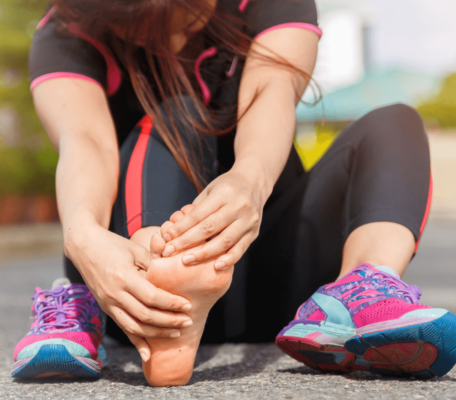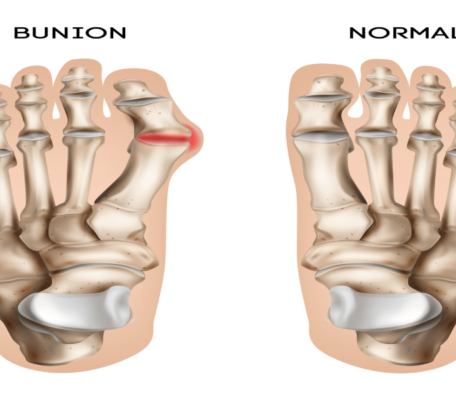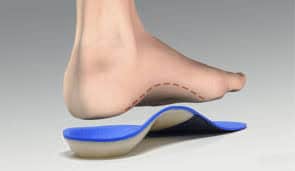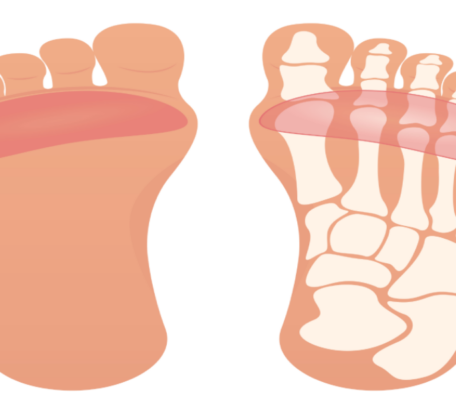Do you have a bunion? Bunions are bony growths that develop on the joint at the base of the big toe. They develop when the big toe presses again the second toe so that the joint comes under great pressure. This is a very common condition, and is much more likely to occur in women than in men.
Here at Foot Solutions, we see many customers with bunions and we are glad to be able to help. Most people find that a combination of good, well-fitted footwear, comfort socks and custom arch supports offers a solution that enables them to move without pain and prevents further damage to the feet.
What Causes Bunions?
Bunions often have a hereditary link, and if family members have suffered with bunions, you may have a higher likelihood of developing them. However, the shoes you wear can also have a big impact on the health of the feet and bunions can be caused by wearing shoes that do not fit properly over a long period of time.
High heeled shoes are notoriously bad for the health of the feet, and this is because they do not offer the cushioning and support that the feet need, and they often have narrow toe boxes which crush the toes together. High heeled shoes can also lead to problems with the tendons and ligaments of the feet and legs, and can put a great deal of pressure on certain areas of the feet.
Bunions may also be caused by some kinds of arthritis, including psoriatic arthritis and rheumatoid arthritis, and by some medical conditions such as connective tissue disorders. If you have particularly flexible joints and loose ligaments, you may be more likely to develop bunions.
How Are Bunions Treated?
Most people who develop bunions will manage to find a solution that can relieve the pain and enable a full and active lifestyle. However, some severe cases may require surgery, particularly if mobility has been affected. An experienced surgeon will be able to advise you if this is suitable for you, and this advice will vary according to the shape of your foot and the severity of your bunion. Surgery to remove bunions is complex and can require up to three months to recover from, so it is well worth exploring all non-surgical options first.
If you have a bunion, you can start by making an appointment to visit your local Foot Solutions Store, and talk to us about the non-surgical treatment options available to you. Our experienced pedorthists will take the time to understand your condition and the impact it has on your life, and will carry out a ten point assessment of your feet before making recommendations. We may suggest the following:
- Finding the right shoes for your feet. Shoes are not created equal! If you have a bunion, this could have been caused or worsened by your footwear and it is very important to find the right shoes to support your feet and prevent further damage. You should avoid shoes with narrow toe boxes or pointed toes, and opt for well-fitted, comfortable shoes that can accommodate your feet without putting pressure on them. Some styles of shoe are much better suited to some feet than others, and a pedorthist can advise you on the best styles for you. It is also important to match your footwear to your activity level and your gait, and you should have specific shoes for exercising, for example.
- Stretch your feet. There are some simple foot exercises and stretches that can help to reduce the tension in your feet and encourage better circulation in this area. Flexing and contracting your toes is a great way to encourage flexibility and strengthen muscles, and picking up marbles or small pebbles with the toes can also be very helpful.
- Rest your legs when possible. If you do not allow yourself to rest and recover during the day, you will put your feet under a great deal of pressure and this is not good for them. It is important to take the time to stop and sit or lie down with your feet higher than your hips at least once a day, and preferably more often, to improve blood circulation and give the feet a break.
- Maintain a healthy weight. Healthy feet are part of a healthy body, and it is important to be aware of the impact that your diet and exercise regime have on your body. A balanced diet that includes whole foods and plenty of fruit and vegetables will give you the basis for a strong and healthy body, and regular exercise will help you to maintain a healthy weight and keep yourself in great shape.
- Try custom arch supports. Custom arch supports are designed to fit your foot exactly, and are made in our laboratories from a personal, topographical map of your foot. Any adjustments are made in store, and many people find that custom arch supports help to relieve the pain of bunions and make moving around much more comfortable. Custom orthotics are an excellent solution for many foot problems, and our customers are often surprised by the positive differences they feel immediately.
- Use pain relief. You may find that over the counter pain killers enable you to manage the pain caused by your bunion, and bunion pads may help to cushion and protect the area from further damage. Icing the area may also help to relieve pain and inflammation if you have been on your feet all day. These are not corrective measures, but can help you to cope with the bunion on a daily basis.
- Try splints or toe spacers. Some people believe that specific bunion splints or toe spacers can help to realign the bones and muscles of the foot, but research does not tend to support this theory. You may find, however, that using devices such as these relieves the pressure in your feet and reduces the pain that you are feeling.
If you are living with a bunion, it’s time to make an appointment to visit us at your local branch of Foot Solutions. We believe that everyone should be able to lead a full and active life, and foot pain should not prevent this! Talk to us to find a personalised solution to your foot pain and start enjoying your life again.
Taking Care of Your Feet:
Many of us take our feet for granted, but they work hard to support us every day, and taking care of them in return is very important. Following our simple guide to daily foot care can transform the way your feet feel and ensure that they stay in good shape for longer. We recommend that you:
- Wash your feet every day. It sounds simple but washing your feet every day is the best way to keep them clean and prevent a build up of bacteria on the skin. Use a simple soap without harsh chemicals, and ensure that you dry them very carefully afterwards, particularly between the toes.
- Moisturise and massage them. Moisturising your feet is very important to keep them soft and supple, and it’s also a great opportunity to give them a quick massage to encourage better blood flow. Use a non perfumed oil or cream to avoid irritating the skin of your feet, and allow them to dry before you put socks and shoes on.
- Don’t neglect your footwear. Remember that bacteria can breed inside shoes, especially if they are damp. You should alternate the shoes you wear to avoid this, and ensure that shoes are aired before they are worn again.
- Check out any foot pain. Do not ignore any pain that you feel in your feet, and check out any problems as soon as possible. Aches and pains in the feet can of-ten be resolved by a simple adjustment to your footwear, and foot pain can be debilitating if left untreated. Pop in to your local Foot Solutions Store and take the weight off your feet while we help you to find the perfect solution.
Visit Foot Solutions To Resolve Foot Pain in Ireland
Here at Foot Solutions, our experienced pedorthists will be delighted to help you to find the best options for your feet. We see customers with all kinds of foot problems, from Athlete’s Foot to Plantar Fasciitis, and we have an excellent range of training, work and casual shoes and sandals to browse. We can advise you on the best choices for your foot shape and your gait, and we will work with you to resolve any pain you are feeling.
Visit us at Foot Solutions for a professional fitting, or book an appointment online now.

